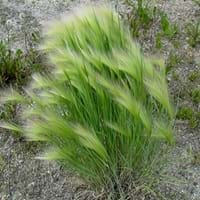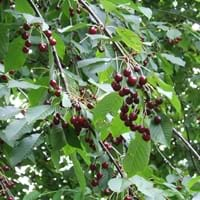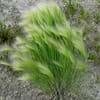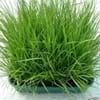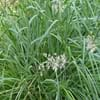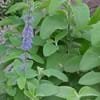Life Span
Perennial
Perennial
Origin
North America, South America, Europe, Southern Africa, Asia
Hybrid origin, Europe, Asia
Types
Not Available
Fruit
Number of Varieties
Not Available
Habitat
Cultivated Beds
Temperate Regions
USDA Hardiness Zone
Not Available
4-8
AHS Heat Zone
Not Available
8-1
Sunset Zone
Not Available
A2, A3, 1a, 1b, 2a, 2b, 3a, 3b, 4, 5, 6, 7, 8, 9, 14, 15, 16, 17
Habit
Not Available
Upright/Erect
Minimum Height
Not Available
Minimum Width
Not Available
Flower Color Modifier
Bicolor
Bicolor
Fruit Color
Brown
Red, Dark Red
Leaf Color in Spring
Green, Light Green, Gray Green
Dark Green
Leaf Color in Summer
Light Green
Dark Green
Leaf Color in Fall
Not Available
Dark Green
Leaf Color in Winter
Not Available
Light Green
Leaf Shape
Vertical
Simple lobed or unlobed
Plant Season
Not Available
Spring, Summer, Fall
Sunlight
Full Sun
Full Sun, Partial Sun
Type of Soil
Loam, Sand
Clay, Loam, Sand
The pH of Soil
Not Available
Acidic, Neutral, Alkaline
Soil Drainage
Well drained
Well drained
Bloom Time
Spring, Summer
Spring
Tolerances
Drought
Drought
Where to Plant?
Ground
Ground
How to Plant?
Divison, Seedlings
Semi-hardwood and hardwood cuttings
Plant Maintenance
Medium
Medium
Watering Requirements
Average Water Needs, Do Not over Water
Keep ground moist, Use Mulches to help prevent water loss during hot and windy weather
In Summer
Lots of watering
Lots of watering
In Spring
Moderate
Moderate
In Winter
Average Water
Average Water
Soil pH
Not Available
Acidic, Neutral, Alkaline
Soil Type
Loam, Sand
Clay, Loam, Sand
Soil Drainage Capacity
Well drained
Well drained
Sun Exposure
Full Sun
Full Sun, Partial Sun
Pruning
No need to prune
Remove damaged leaves, Remove dead branches, Remove dead leaves
Fertilizers
Nitrogen
All-Purpose Liquid Fertilizer
Pests and Diseases
wheat rust
Birds
Plant Tolerance
Drought
Drought
Flowers
Not Available
Showy
Flower Petal Number
Single
Single, Double
Edible Fruit
Not Available
Yes
Foliage Texture
Fine
Medium
Foliage Sheen
Matte
Glossy
Allergy
Pollen
Anaphylaxis, gastro-intestinal problems, Itchiness, Skin irritation
Aesthetic Uses
Showy Purposes
Beautification, Bouquets, Informal Hedge, Landscape Designing, Showy Purposes, Wild gardens
Beauty Benefits
Not Available
Not Available
Environmental Uses
Air purification
Air purification
Medicinal Uses
Swollen eyelids
anti-inflammatory, Anti-oxidant, Gout, Insomnia, Soothing and relieving pain
Part of Plant Used
Root, Seeds
Flowers, Fruits
Other Uses
Roasted seed is used as a coffee substitute, Used as a cereal in making bread, porridge
Air freshner, Beneficial species for attracting pollinators, Cake, Edible syrup, Oil is used in perfume, soaps, creams, etc., Used to make juice
Used As Indoor Plant
No
No
Used As Outdoor Plant
Yes
Yes
Garden Design
Cutflower, Dried Flower/Everlasting, Edible, Wildflower
Edible, Feature Plant, Fruit / Fruit Tree
Botanical Name
HORDEUM jubatum
PRUNUS cerasus 'Northstar'
Common Name
Foxtail Barley, Wild Barley
Northstar Tart Cherry, Pie Cherry 'Northstar'
In Hindi
Foxtail Barley
आलूबालू
In German
Mähnengerste
Northstar Tart Cherry
In French
Foxtail Barley
Northstar Tart Cherry
In Spanish
La cebada de cola de zorra
Cereza
In Greek
αλωπέκουρου Κριθάρι
Northstar Tart Cherry
In Portuguese
Foxtail Barley
Northstar Tart Cherry
In Polish
włośnica Jęczmień
Northstar Tart Cherry
In Latin
Hordeum foxtail
Northstar Tart Cherry
Phylum
Magnoliophyta
Magnoliophyta
Class
Liliopsida
Magnoliopsida
Clade
Angiosperms, Commelinids, Monocots
Angiosperms, Eudicots, Rosids
Tribe
Hordeeae
Not Available
Subfamily
Pooideae
Not Available
Number of Species
Not Available
Not Available
Importance of Foxtail Barley and Northstar Tart Cherry
Want to have the most appropriate plant for your garden? You might want to know the importance of Foxtail Barley and Northstar Tart Cherry. Basically, these two plants vary in many aspects. Compare Foxtail Barley and Northstar Tart Cherry as they differ in many characteristics such as their life, care, benefits, facts, etc. Every gardener must at least have the slightest clue about the plants he wants to plant in his garden. Compare their benefits, which differ in many ways like facts and uses. The medicinal use of Foxtail Barley is Swollen eyelids whereas of Northstar Tart Cherry is anti-inflammatory, Anti-oxidant, Gout, Insomnia and Soothing and relieving pain. Foxtail Barley has beauty benefits as follows: Not Available while Northstar Tart Cherry has beauty benefits as follows: Not Available.
Compare Facts of Foxtail Barley vs Northstar Tart Cherry
How to choose the best garden plant for your garden depending upon its facts? Here garden plant comparison will help you to solve this query. Compare the facts of Foxtail Barley vs Northstar Tart Cherry and know which one to choose. As garden plants have benefits and other uses, allergy is also a major drawback of plants for some people. Allergic reactions of Foxtail Barley are Pollen whereas of Northstar Tart Cherry have Anaphylaxis, gastro-intestinal problems, Itchiness and Skin irritation respectively. Having a fruit bearing plant in your garden can be a plus point of your garden. Foxtail Barley has showy fruits and Northstar Tart Cherry has showy fruits. Also Foxtail Barley is not flowering and Northstar Tart Cherry is not flowering . You can compare Foxtail Barley and Northstar Tart Cherry facts and facts of other plants too.
